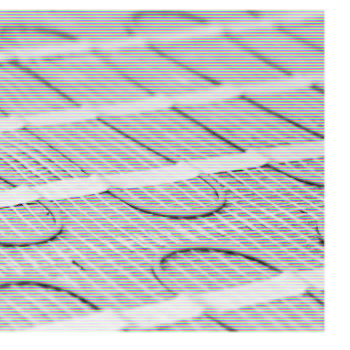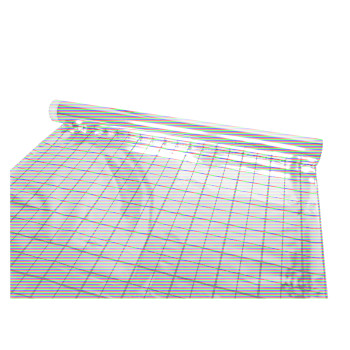
UNDERFLOOR HEATING PRACTICAL GUIDE*
It might seem that underfloor heating, increasingly popular, is a modern invention. However, the first mentions of this system date back to ancient Greece, where heated floors were also enjoyed by the Romans. Warm air distributed through special channels in the floor heated baths and patrician houses. Examples of such heating systems can be seen, for instance, in the ruins of Roman baths in Trier (a city in modern-day Germany) and Pompeii (Italy).
Nowadays, underfloor heating is pretty common. People know it's great because it keeps your feet warm and spreads heat evenly throughout your home. But to get all these benefits, you need to use the right insulation materials and install the heating pipes correctly. In this article, we'll show you how to set up underfloor heating the right way, avoid common mistakes, and pick the best insulation materials.
UNDERFLOOR HEATING - SYSTEM TYPES
When opting for underfloor heating, you can choose between two different installation systems:
 Electric heating cables or mats: These are laid directly in the concrete screed layer (between thermal insulation and tiles).
Electric heating cables or mats: These are laid directly in the concrete screed layer (between thermal insulation and tiles).
Depending on the room's limitations, we choose a specific underfloor heating system. When floor thickness is an issue, the go-to choice is often the heating mat, which is thin (usually less than 7mm) and quick to install under floor tiles. However, it has drawbacks: it consumes a lot of electricity, reacts slowly to temperature changes, and needs to run constantly. It's typically used in emergencies when floor thickness is restricted.
In an electric underfloor heating system, it's not advisable to apply a thicker layer of tile adhesive, as it could potentially result in a very slow response to the parameters set by the controller.
 Water heating pipes: These are laid directly in the concrete screed layer under the floor (also between thermal insulation and tiles).
Water heating pipes: These are laid directly in the concrete screed layer under the floor (also between thermal insulation and tiles).
The water pipes underfloor heating system is much more economical than electric underfloor heating. Water, flowing through pipes laid under the floor, serves as the energy carrier. Since our body's temperature is 36.6°C, we don't need very high temperatures to keep us warm. The most common set temperature in water pipe systems is between 30-35°C, which is sufficient to heat the entire home surface. This is a low-temperature underfloor heating system, so it doesn't require a lot of energy or gas to heat the circulating water.
The water temperature in the pipes when the system is off is around 15°C, so it doesn't require much energy to heat it up to 30 degrees Celsius. To heat the water in the underfloor heating system, mixers connected to a gas boiler are used.
The pipes used for water underfloor heating are PEX pipes with a thickness of 16mm. These pipes are laid 15cm apart to form closed loops, meaning the water in each loop returns to the mixer. The maximum allowable length of each loop is 50 metres, but the most optimal length is between 30-40 metres, ensuring the best even distribution of heat.
It's important not to allow loops longer than 50 metres because the water at the end may already be cooled down, resulting in cold spots on the floor. Water underfloor heating should not be installed in permanently inaccessible areas, such as where kitchen furniture is expected to be placed.
One of the main drawbacks of this water underfloor heating system is its thermal expansion, causing the floor to rise by up to 2mm. This gap should be considered when installing skirting boards.
UNDERFLOOR HEATING - HOW THICK SHOULD INSULATION BE?
Regardless of the underfloor heating system you choose, thermal insulation under the floor is required. Why? Because each of these underfloor heating systems operates on the principle of convection, lifting heat from the bottom to the top. Therefore, each underfloor heating system should be equipped with a barrier to prevent the warm temperature from escaping downwards, along with a reflective foil to bounce back this heat.
Thermal insulation, typically with an aluminium foil layer on its surface, serves this purpose. The thickness of the insulation needed for underfloor heating depends on the average ground temperature in the area, whether there is moisture present, and whether a damp-proof membrane has been applied.
For optimal performance, underfloor heating typically requires thermal insulation that's at least 70mm thick. However, some people go for thinner options as thin as 15mm.
This often happens when underfloor heating isn't considered during the initial stages of home design.
It's important to remember that the thickness of thermal insulation for underfloor heating also depends on the guidelines outlined in current Building Regulations and the required U-value for the floor. Therefore, it may turn out that a thickness of 150mm or 200mm is the minimum required insulation thickness.
UNDERFLOOR HEATING - WHAT IS THE BEST THICKNESS?
Several factors determine the ideal thickness of thermal insulation for underfloor heating, such as its construction and whether a damp-proof membrane has been applied. Based on thousands of installed underfloor heating systems, it's generally concluded that the best insulation thickness falls within the range of 60-100mm. This thickness is sufficient to ensure the proper functioning of the underfloor heating system. However, many people opt for thinner insulation without experiencing noticeable performance issues with their installation.
UNDERFLOOR HEATING - WHAT IS THE THINNEST INSULATION?
The thinnest insulation available in the UK market for insulating underfloor heating is the 15mm Unilin PIR board. This board is covered with aluminium foil on both sides, which not only reflects heat upwards but also facilitates the installation of PEX pipes with lines marked every 100mm on the foil.

UNDERFLOOR HEATING - DO YOU NEED SPECIAL UNDERLAY?
In order for underfloor heating to work, it is necessary to use a physical reflective barrier that reflects heat. In other words, this is the underlay for underfloor heating. It is typically a shiny, thin aluminium foil, similar to what you might see in NASA spaceships. This foil is unrolled from rolls measuring 1.5m x 50m with a 10cm overlap. Subsequently, it is connected using 75mm aluminium foil tape. Additionally, this foil is secured to the thermal insulation using pins during the installation of PEX pipes.
UNDERFLOOR HEATING - CAN YOU USE CELOTEX FOR UNDERFLOOR HEATING?
The Celotex® brand is highly recognizable in the UK market. Celotex® isn't just about expertise in insulation technologies; it's also the first name that comes to mind when insulation is mentioned. This is likely because Celotex was the first company to produce PIR boards under its own name. Today, these boards are known as TB4000 or GA 4000. Celotex PIR boards are widely used in underfloor heating systems and can be confidently used, especially since they come with built-in aluminium foil on both sides.
The Celotex PIR board compressive strength is 120 kPa, which is entirely sufficient to withstand the static load typically encountered in floors. The competing company, Unilin, produces a similar product with a slightly higher compressive strength of 150 kPa.
UNDERFLOOR HEATING - BEST INSULATION MATERIAL | TOP 3 MUSKETEERS
To determine the best insulation products for underfloor heating, it's important to specify which ones have the highest compressive strength or ability to withstand large loads without deformation. Another important factor to consider is the thermal conductivity of the insulation materials used for underfloor heating. Generally, lower thermal conductivity indicates better insulation performance, as it means the material is more resistant to heat transfer. This helps in retaining heat within the room and improving energy efficiency.
Phenolic board indeed boasts a very low thermal conductivity coefficient, around 0.019 W/mK, making it a highly effective insulation material. In second place, we have PIR rigid board with a value of approximately 0.022 W/mK, and in third place, XPS with around 0.033 W/mK. The lower the thermal conductivity coefficient, the better the material insulates heat.
The best insulation materials for underfloor heating include Phenolic board (120 kPa), PIR rigid boards (120-150 kPa), and XPS expanded polystyrene boards (300 kPa). EPS polystyrene is less commonly used unless it's in higher density (100 kPa).
Mineral roll or loose fill insulation would definitely be unsuitable for underfloor heating.
Below is a list of products that can be used for underfloor heating:
KINGSPAN
UNILIN
CELOTEX
SOPREMA
CONCLUSION
Installation of underfloor heating is relatively straightforward, and by following general principles, one can say that it can be done by any DIY enthusiast. It's important to use thermal insulation with the appropriate compressive strength (>100 kPa), secure PEX pipes at the correct distance of 15cm, and avoid circuits longer than 50m. For underfloor heating, the minimum insulation thickness is 70mm, and the best boards to use are phenolic boards, PIR boards, and XPS. By adhering to these principles, underfloor heating will surely function for many years, allowing you to enjoy warm floors with a smile on your face.
Related articles:
7 EASY TIPS FOR INSTALLING FOIL FACED INSULATION THE RIGHT WAY
BEST FLOOR INSULATION - THE COMPLETE GUIDE
STEP-BY-STEP GUIDE: HOW TO INSTALL CELOTEX BOARD BETWEEN FLOOR JOISTS
THE INSULATION GAME: DON'T LET HEAT ESCAPE, WIN WITH PROPER INSULATION!
*Insulationgo LTD strives to keep the content accurate and up-to-date, but we cannot be held responsible for any mistakes or exclusions.
The information in this blog isn't expert advice and shouldn't replace talking to the right specialists. Before buying or deciding anything based on this info, it's best to contact the product manufacturer directly to double-check if it's right for what you need.
Descriptions, drawings, photographs, data, proportions, weights, and measured values provided here may change without prior notice and do not establish the guaranteed contractual quality of the products. The recipient of these products holds the responsibility to comply with proprietary rights, existing laws, and legislation.
Using this blog implies acknowledgment and agreement that Insulationgo LTD cannot be held accountable for any damages, losses, or inconveniences resulting from the use or reliance upon the information provided. This limitation of liability extends to all users of the blog, including visitors, readers, and subscribers.










































































































